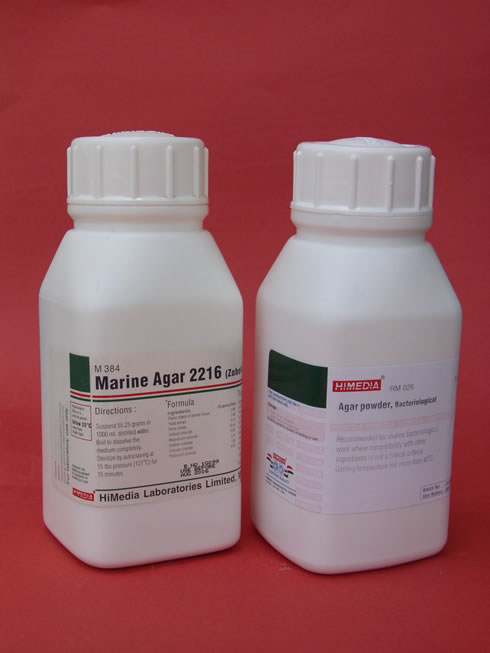Seaweeds as
a source of agar

Agar,
a general name for polysaccharides extracted from certain kinds of
red algae, is built up of alternating D- and L- galactopyranose units.
The name agar is derived from a Malaysian word "agar-agar", which
literally means "seaweed". As the gelling agent "kanten", it is known
from Japan since the 17th century; extracts from red seaweeds were
carried up the mountains to freeze overnight so that water and other
impurities could be extracted from the material. Agar finds its widest
use as a solid microbiological culture substrate. Modern agar is a
purified form consisting largely of the neutral fraction known as
agarose; the non-ionic nature of the latter makes it more suitable
for a range of laboratory applications. Agar in a crude or purified
form also finds wide usage in the food industry where it is used in
various kinds of ices, canned foods and bakery products.
The best
quality agar is extracted from species of the red algal genera Pterocladia
and Gelidium, which are harvested by hand from natural populations
in Spain, Portugal, Morocco, the Azores, California, Mexico, New Zealand,
South Africa, India, Chile, and Japan. Agars of lesser quality are
extracted from Gracilaria and Hypnea species. Agar quality
is seasonal in Pterocladia species, being low in the colder
months and high in the warmer. At present, there is no commercial
mariculture of agar-producing weeds carried out in the world, largely
because techniques for growing weeds with good-quality agar have not
been developed. About 10,000 t of agar are produced world-wide at
present. There is currently a shortage of exploitable populations
of agar-producing seaweeds and agar is consequently an expensive product.
At present, more than 50% of all agar being produced is food-grade
agar being produced from Gracilaria.

